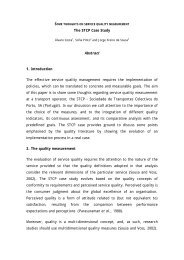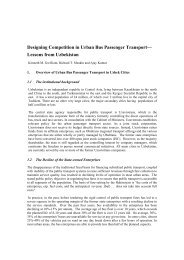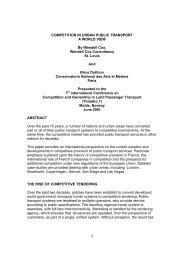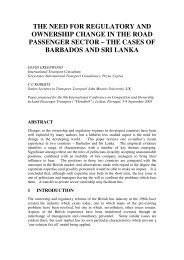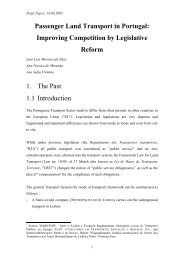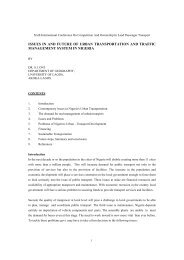Consideration of Quality Criteria when Awarding Bus Traffic Contracts
Consideration of Quality Criteria when Awarding Bus Traffic Contracts
Consideration of Quality Criteria when Awarding Bus Traffic Contracts
You also want an ePaper? Increase the reach of your titles
YUMPU automatically turns print PDFs into web optimized ePapers that Google loves.
About price/quality relation<br />
In Finland, there are neither special public procurement legislation nor rules to regulate the<br />
setting <strong>of</strong> the balance between price and quality <strong>when</strong> applying the economically most<br />
advantageous tender. In the literature it has been considered that the weight <strong>of</strong> the price<br />
should not be set too low, as this would not fulfil the requirement <strong>of</strong> the Finnish public<br />
procurement law (Laki julkisista hankinnoista 1505/92, 7 §) setting forth the economical<br />
criteria. In Finnish jurisdiction, it has been considered that in case the winning tender is<br />
clearly more expensive than the other ones, it should show respectively better quality<br />
(Decision <strong>of</strong> the Supreme Administrative Court 19.12.2002, taltio 3384), and also among<br />
others that depending on the procurement in question the price should have reasonable weight<br />
(e.g. decision <strong>of</strong> the Competition Counsel in Finland <strong>of</strong> 2.3.2001, 2/690/2000). This means<br />
that the price shall always have a reasonable role <strong>when</strong> applying the economically most<br />
advantageous tender.<br />
Summary<br />
From the legal point <strong>of</strong> view model A is the model with the least risk. In the light <strong>of</strong> present<br />
legislation and jurisdiction, special attention should be paid to the use <strong>of</strong> references as<br />
evaluation criteria (model C). These criteria should be used only restrictedly or should be left<br />
out completely. From the legal point <strong>of</strong> view, model B is the most complicated and risky<br />
model, especially in respect <strong>of</strong> setting the minimum requirements.<br />
Basically, all <strong>of</strong> the procedure models seem, from the juridical point <strong>of</strong> view, to be possible.<br />
The self-assessment model does, however, have some aspects to be considered further.<br />
Attention shall also be paid to the criteria applied in the models, e.g. the need for the criteria<br />
to be linked directly to the subject matter <strong>of</strong> the contract.<br />
The first task in achieving a stronger weight for the quality criteria is to specify those factors<br />
which are <strong>of</strong> importance from the quality point <strong>of</strong> view pursued by the contracting authority<br />
and the passengers and to verify the technical specifications i.e. the quality criteria linked to<br />
the invitation to tender. For the purpose <strong>of</strong> improving the quality, the target shall be creating a<br />
culture <strong>of</strong> co-operation between the contracting entity and the operators.<br />
5. Conclusions<br />
Both authors came to the conclusion that there is work to be done with quality factors to make<br />
the bus services more attractive. The main action, however, is not the contracts or the<br />
evaluating the quality factors in the tenders, but in the first hand the cooperation with<br />
authorities and the operators in different levels <strong>of</strong> organisations. The other thing is the<br />
tendering documents in which the quality demands set to the operator could be specified more<br />
properly than before. The public transport authority will specify the insistence to indicate



